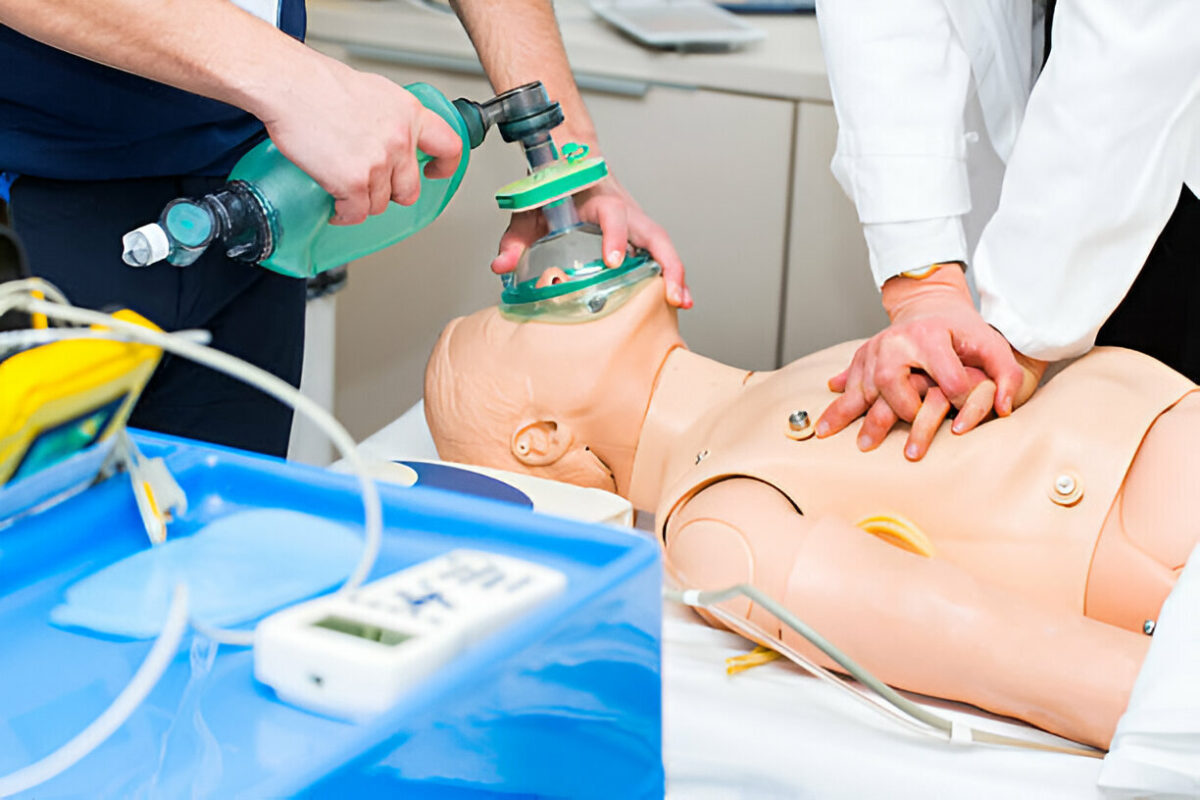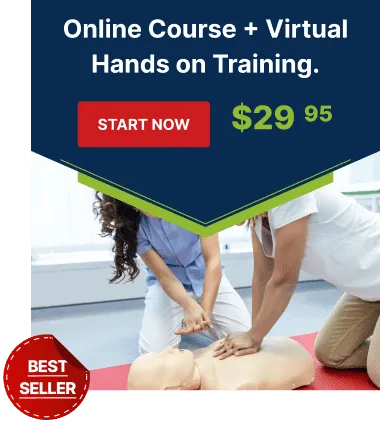Bag Valve Mask ventilation is a critical procedure in emergency medical care. A BVM (bag-valve-mask) is employed to provide positive pressure ventilation to patients who are not breathing adequately. More than 400,000 people in the US die from cardiac arrest every year. With effective airway management by incorporating a BVM, chances of recovery can be successfully increased.
A bag valve mask ventilation becomes mandatory in certain conditions. For example, you need to employ a BVM ventilation when the patient is dealing with respiratory failure or cardiac arrest. This technique is also imperative when it comes to anesthesia induction. Therefore, understanding the implications of BVM ventilation ensures effective and timely intervention, which ultimately guarantees positive patient outcome.
Master ACLS Now
Get ACLS certified with confidence
How to employ a BVM (Bag-Valve-Mask) ventilation?
Bag-Valve-Mask (BVM) ventilation is a fundamental skill in emergency medicine used to provide positive pressure ventilation to patients who are unable to breathe on their own. Mastery of BVM ventilation is essential for healthcare providers to ensure effective airway management in critical situations. Below are the key steps to employ BVM ventilation:
- Prepare the Equipment:
- Select the appropriate size of the mask and bag for the patient (adult, pediatric, or infant).
- Check the BVM for any damage or leaks.
- Attach an oxygen supply to the BVM if available, typically set at 10-15 liters per minute to deliver high oxygen concentration.
- Position the Patient:
- Place the patient on their back (supine position).
- Ensure the patient’s head is in a neutral position, or use the head-tilt/chin-lift maneuver to open the airway. If spinal injury is suspected, use the jaw-thrust maneuver instead.
- Seal the Mask:
- Place the mask over the patient’s nose and mouth.
- Use the “C-E” grip: form a “C” with your thumb and index finger to hold the mask, and use the other three fingers to lift the mandible (jaw).
- Ventilate the Patient:
- Squeeze the bag slowly and steadily for about one second, watching for chest rise, which indicates effective ventilation.
- Allow the bag to refill completely between squeezes to ensure full breaths are delivered.
- Ventilate at an appropriate rate: approximately 10-12 breaths per minute for adults (one breath every 5-6 seconds) and 12-20 breaths per minute for children and infants (one breath every 3-5 seconds).
- Monitor the Patient:
- Continuously observe the patient’s chest rise and fall to confirm effective ventilation.
- Monitor the patient’s vital signs, including oxygen saturation and heart rate.
- Be alert for signs of gastric insufflation (stomach inflation), which may indicate over-ventilation or improper technique.
- Adjust as Necessary:
- Reassess and adjust the mask position and grip if there are difficulties in achieving an effective seal.
- Ensure the airway remains open by reapplying the head-tilt/chin-lift or jaw-thrust maneuver as needed.
- Consider Advanced Airway Management:
- If BVM ventilation is ineffective, consider advanced airway techniques such as inserting an oropharyngeal airway (OPA) or nasopharyngeal airway (NPA) to help maintain patency.
- Prepare for endotracheal intubation or other advanced airway procedures if necessary and if within the provider’s scope of practice.
Effective BVM ventilation can be life-saving in emergency situations, and proficiency in these steps is crucial for all healthcare providers involved in acute care.
Read More: What is the difference between Cardiac Arrest and Heart Attack?
What are the advantages of a bag mask device?
A bag-mask device is an important tool that is often required in the emergency room. It provides respiratory support to patients who are not breathing adequately. Here are the key benefits:
- Immediate Ventilation: Enables rapid delivery of breaths to patients in respiratory distress or arrest.
- Portability: Lightweight and easy to transport, making it ideal for use in various emergency scenarios and settings.
- Ease of Use: Simple design allows for quick assembly and application, even in high-stress situations.
- Versatility: Suitable for use across all age groups with appropriately sized masks and bags (adult, pediatric, and infant).
- High Oxygen Delivery: Can deliver a high concentration of oxygen when connected to an oxygen source, enhancing oxygenation in patients.
- No Need for Power Source: Manual operation ensures functionality without dependence on electricity or batteries, crucial in field conditions or during power outages.
- Control Over Ventilation: Allows precise control over ventilation rate and volume, accommodating the specific needs of different patients.
- Integration with Advanced Airway Devices: Compatible with advanced airway management tools, such as endotracheal tubes and supraglottic airways, for enhanced ventilation.
- Immediate Feedback: Provides visual and tactile feedback through chest rise and bag resistance, helping to ensure effective ventilation.
- Training and Practice: Widely used in medical training programs, helping healthcare providers gain proficiency in emergency ventilation techniques.
Read More: Crash cart supply & equipment checklist
The BVM’s combination of efficiency, versatility, and ease of use underpins its critical role in emergency medical care, facilitating rapid and effective respiratory support when it is most needed.
Conclusion
Bag Mask Valve ventilation is a vital technique that provides immediate and effective respiratory support to a person who is struggling with breathing. Understanding, indications, equipment and proper techniques ensure that healthcare providers administer the right steps at the right time. Mastering BVM ultimately enhances patient outcomes and continues to be a vital asset in emergency airway management.







